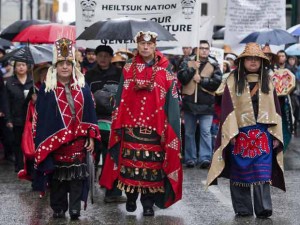Based on the PESTEL analysis, used to analyze macro-environmental factors, the focus of this post will be on the political and environmental factors surrounding the Northern Gateway Pipeline, a hot topic involving Aboriginal contention to Enbridge’s pipeline.
From a political standpoint, though Enbridge has received the support (or neutrality) from many Aboriginal groups directly affected by the pipeline (about 40% of the B.C. Aboriginal groups have signed deals to take a financial cut from the project), there is still enough opposition to stop the deal from going through. One group for example, the Nak’ azdli, are concerned about the possible environmental repercussions. To address these issues, Enbridge should have ongoing discussions with these groups to find a compromise (such as larger financial stakes, or greater investment in the pipeline’s integrity), which happens to be exactly the course of action they are currently taking.
Oil pipelines will always spark environmental concern due to the risks associated with them. Therefore, necessary precautions should be taken to ensure their integrity. Currently, the Northern Gateway project is quite safe, with minimal chance of disaster. According to Enbridge, the likelihood of a major rupture in B.C. is 1 in 1566 years, and for a “pinhole” leak is 1 in 79 years. As well, improvements may also be made in the future from the ongoing discussions with Aboriginal groups that are still reluctant.
Given all the right steps that Enbridge is taking to address Aboriginal and environmental concerns, it is difficult to see a future without the Northern Gateway Pipeline in existence, though only time can tell.
For the original article, see this link.

